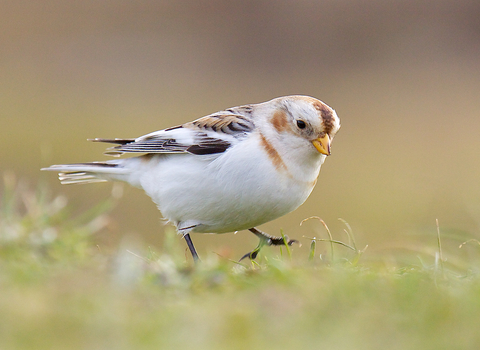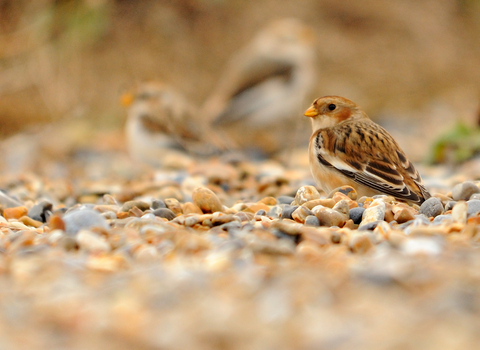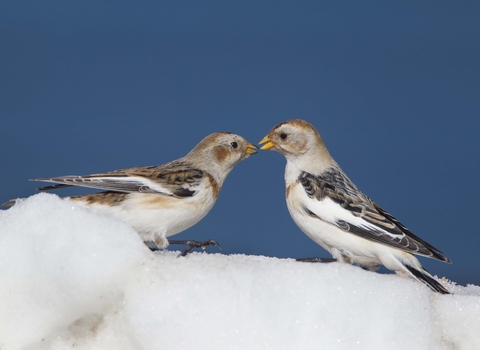
©David Martin

©Amy Lewis

©Mark Hamblin/2020VISION
Snow bunting
Only a few pairs of snow bunting breed here, so look out for this striking black-and-white bird in winter around Scotland, the North West and the East coast of England.
Scientific name
Plectrophenax nivalisWhen to see
January to DecemberSpecies information
Category
Statistics
Length: 16cmWingspan: 35cm
Weight: 35-42g
Average lifespan: 3 years
Classified in the UK as Amber under the Birds of Conservation Concern 5: the Red List for Birds (2021). Protected in the UK under the Wildlife and Countryside Act, 1981.
